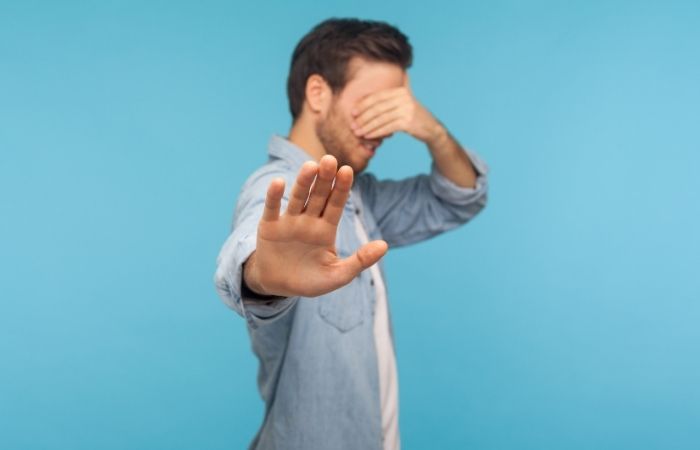How Teens Are Catching Oral Gonorrhea Without Even Realizing It
Quick Answer: The sex act with the highest STD transmission risk is unprotected receptive anal sex, followed closely by unprotected oral sex, especially when symptoms aren’t visible. Protection methods vary by act but are crucial for reducing risk.
Why This Article Matters, Even If You Think You're "Careful"
If you’ve ever skipped a condom during oral, assumed hand stuff was safe, or thought “it wasn’t real sex,” this article is for you. It's for people who’ve had casual hookups, queer sex, long-term relationships, or one night where the condom never made it out of the drawer. It’s also for those who’ve felt shame, confusion, or just plain shock when symptoms showed up after what felt like a low-risk encounter.
Maybe you're here because something feels off. A tingle, a bump, a rash that wasn't there before. Or maybe you just want to understand the risks before your next encounter. Either way, knowing which sex acts carry the highest risk, and how to protect yourself, can change everything. Literally. It can keep you from a misdiagnosis, a missed infection, or the kind of phone call no one wants to make.
Let’s Talk Data: What the Studies Actually Say
There’s no universal ranking for the “most dangerous” sex act, because risk depends on many factors: whether the infected partner is symptomatic, the presence of open sores or cuts, viral load, and whether protection was used. But multiple medical sources, including the CDC and peer-reviewed journals, consistently highlight one act at the top of the list: unprotected receptive anal sex.
This act has the highest rate of HIV transmission due to the delicate tissue lining the rectum, which can tear easily and allow the virus direct access to the bloodstream. It’s also a prime route for other STDs like gonorrhea, chlamydia, and syphilis.
But oral sex isn’t far behind, and it’s often ignored. Throat gonorrhea is increasing rapidly, especially among people under 30, according to recent studies. And because most oral STDs don’t cause noticeable symptoms, people unknowingly spread them.
Table 1. STD transmission risk by sex act based on peer-reviewed data and CDC guidelines. Relative risk varies based on condom use, sores, and exposure level.

People are also reading: Dating Again at 40? Don’t Assume Your Doctor Will Test You for STDs
Case Confession: “It Wasn’t Intercourse, But I Still Got Herpes”
Daniella, 33, had been careful. No intercourse unless the condom was on, and she always asked partners if they’d been tested. But after a summer fling that involved only oral and manual stimulation, she noticed a blister near her vulva. Tests later confirmed it was HSV-1, the same strain that causes cold sores.
“I felt betrayed by my own caution,” she says. “I kept thinking, ‘But we didn’t even have sex.’”
Her case isn’t rare. Many people contract STDs from acts they don’t even consider “sex,” especially if they grew up in abstinence-only or heteronormative sex education systems. The gap between what we think is safe and what actually is, that’s where risk lives.
Even fingering can transmit herpes or HPV if someone has cuts on their hand or genital sores that aren’t visible. You don’t have to bleed, ejaculate, or orgasm to pass or catch an infection.
Protection Isn’t One-Size-Fits-All: What Works Depends on the Act
Condoms are important, but they’re not a universal shield. Each sex act needs a specific approach to protection, and what works well for one may barely make a dent for another. One of the most common mistakes people make? Assuming that if there’s no ejaculation or penetration, there’s no risk.
Case in point: Kevin, 19, was a college freshman when he hooked up at a party. “We didn’t even take our clothes all the way off,” he told the nurse practitioner later. “It was just some oral and fooling around.” Weeks later, he developed a rash and a sore throat. His rapid test came back positive for syphilis, most likely caught during oral sex.
Oral sex protection often gets skipped because it feels awkward, unfamiliar, or “kills the mood.” Dental dams are rarely taught in sex ed, and flavored condoms are marketed more like novelty items than real tools for health. But when used correctly, they reduce transmission risk for herpes, HPV, gonorrhea, and syphilis.
Table 2. Matching protection to sex acts helps reduce risk more effectively than “always use a condom” advice alone.
When the Risk Doesn’t Match the Perception
There’s a reason this article doesn’t open with scary stats and abstinence advice. It’s because most people engaging in high-risk behaviors don’t think they are. They think they’re doing the “safer” thing by avoiding penetration. They think using a condom for vaginal sex but skipping it for oral is a reasonable compromise. And often, they’ve never been told otherwise by a healthcare provider, sex-ed class, or even Google.
In one 2021 study published in the Journal of Adolescent Health, researchers found that only 12% of participants used protection during oral sex, despite 63% reporting recent oral activity. That same study noted that HPV and gonorrhea transmission via oral sex were increasingly common, particularly among young adults.
Ari, 22, thought they were being cautious. They’d recently started dating someone new, and before their first hookup, they talked about past partners and recent STD tests. No red flags. But a few weeks after their first few encounters, Ari developed sores inside their mouth. A visit to a sexual health clinic revealed they’d contracted HSV-2.
“I didn’t even know you could get herpes in your mouth,” they said. “I thought that was just cold sores, and even then, I didn’t see any on him.”
This is the kind of gap we’re here to close: what we think we know about STD risk, and what the body and science say. STDs don’t care about your definition of sex. They spread through skin, saliva, fluids, and friction, not labels.
What About “Just Kissing”? Here’s What to Know
Let’s clear this up: you can absolutely get certain STDs from kissing. It’s rare, but not impossible, especially if there are open sores, cuts, or active symptoms.
Herpes Simplex Virus (HSV-1) is the biggest culprit. Often referred to as “oral herpes,” it can be spread by kissing even when there’s no visible cold sore. This is because viral shedding can still happen when someone is asymptomatic. That means you can contract the virus from a kiss, then later pass it during oral sex to another partner’s genitals.
Syphilis is another concern. While less common, it can transmit through open-mouth kissing if a syphilitic sore is present in or around the mouth. And while mono and cytomegalovirus aren’t technically classified as STDs, they’re sexually transmissible and often passed through kissing.
The point isn’t to demonize kissing, it’s to stop pretending it’s risk-free. The bigger issue is cumulative risk. Combine kissing with oral, manual, or genital contact, and suddenly that “low-risk night” carries more danger than people realize.
When Do Symptoms Show Up? And What If There Are None?
One of the most gut-wrenching parts of catching an STD is the wait. Waiting for symptoms to appear. Waiting to see if that tingle or rash means anything. Or worse, realizing too late that some STDs never show obvious signs at all.
Here’s the brutal truth: You can be contagious without knowing you’re infected. Many people carry and spread infections like chlamydia, gonorrhea, herpes, and HPV without ever seeing a blister, a drip, or a bump. That’s why relying on visible symptoms, or a partner’s appearance, is not enough to gauge safety.
Timing matters. Not just for catching symptoms, but for testing too. Each infection has a different “window period”, the time between exposure and when it becomes detectable by a test.
Table 3. STD symptom onset vs. testing window periods. Always retest if exposed again or symptoms persist after a negative result.
What Happens If You Ignore It?
Most people don’t ignore potential symptoms because they don’t care, they ignore them because they’re scared, confused, or convinced it’s something else. A rash that looks like razor burn. A sore throat chalked up to allergies. A bump dismissed as an ingrown hair.
Cam, 29, noticed a white patch on their tonsils after a weekend hookup. It wasn’t painful, and it disappeared in a few days. They assumed it was a canker sore or irritation from smoking. Months later, during a routine panel, they found out they had gonorrhea, likely caught during oral and sitting dormant in their throat.
“I wasn’t even sick. No fever, no pain. If I hadn’t done the test, I never would’ve known.”
Left untreated, many STDs can cause lasting damage, pelvic inflammatory disease, infertility, chronic pain, neurological symptoms. And infections like syphilis or HIV can progress significantly without early care. This is why prevention isn’t just about condoms, it’s about testing, timing, and talking.

People are also reading: When Endometriosis Symptoms Might Actually Be Chlamydia or PID
What Testing Can (and Can’t) Tell You
Rapid tests and mail-in kits have changed the game. No more awkward clinic visits or waiting rooms if you don’t want them. But even the best test isn’t magic, it can only detect an infection once enough viral load or antibodies are present.
This is where many people trip up: testing too early. You feel the panic rise after a risky encounter, so you test the next day. It comes back negative, and you breathe a sigh of relief. But that “peace of mind” may be premature.
Think of testing like baking. You can’t check a cake for doneness five minutes after putting it in the oven. Some infections take time to “show up” on a test, and if you test too early, you might get a false negative.
The safest move? Test after the window period, then again if symptoms appear or new exposures happen. That’s why combo kits like the Combo STD Home Test Kit are so useful, they let you test for multiple infections at once and are discreetly delivered to your door.
Why This Isn’t About Fear, It’s About Power
Knowing your risk level isn’t about ruining the mood. It’s about reclaiming your body. Your health. Your choice. Because here’s the truth: You can have thrilling, adventurous, exploratory sex and still protect yourself. You don’t have to choose between safety and satisfaction. You just need real information, and tools that meet your reality, not just a textbook version of sex.
Maybe you love oral. Maybe you’re exploring kink. Maybe you’ve got a long-term partner but don’t know their full testing history. Whatever your sex life looks like, protection isn’t about shame. It’s about strategy. It’s about putting your health in your own hands, and knowing that even if something slips through, you have options. You have treatments. You have community.
And you have the right to ask, to test, to pause, to choose differently tomorrow than you did yesterday.
FAQs
1. What's the actual riskiest sex act for STDs?
That crown goes to unprotected receptive anal sex. Not because it’s “bad” or shameful, but because the tissue inside the rectum is fragile and easy to tear , giving infections like HIV, gonorrhea, and chlamydia a direct route into the bloodstream. But oral sex is no angel either. People seriously underestimate how many STDs it can spread.
2. Can you really get an STD from oral sex?
Absolutely , and a lot of folks learn this the hard way. Oral sex can pass on herpes, syphilis, gonorrhea, HPV, and more. Sometimes the giver gets it in the throat; sometimes the receiver gets it on their genitals. Most of the time, there are no symptoms. That’s why it spreads so easily.
3. How about kissing , is that safe?
Mostly, yes. But if someone has an active cold sore (that’s HSV-1), kissing can absolutely pass it on , and that virus can then go on to cause genital herpes during oral sex. If there’s an open sore or a cut in your mouth? That amps up the risk, too. Bottom line: kissing isn’t high risk, but it’s not immune either.
4. Could I really get something from just hands or fingering?
It's rare, but it can happen. If there’s a cut, sore, or open skin on the hand , and contact with infected fluids or a lesion , it’s possible to pass things like HPV or herpes. Think of it as low risk, not no risk. Handwashing after sex is underrated self-care.
5. Do I need to use condoms during oral?
We’re gonna say yes , even though most people don’t. Condoms and dental dams significantly reduce your chances of picking up or passing along STDs like gonorrhea, syphilis, and herpes. Flavored condoms exist for a reason. And if you’re going down on someone with a vulva or anus, a dental dam (or even a cut-open condom) is your barrier buddy.
6. Will a standard STD test cover my mouth or butt?
Not unless you ask for it. Most clinics or at-home kits focus on urine or genital swabs. If you’ve had oral or anal sex, make sure to request a throat swab or rectal test. You deserve a test that matches your actual sex life, not some outdated “base model” package.
7. How soon after a hookup should I get tested?
Depends on the infection. Some STDs show up in 5–7 days, others take weeks. A good general rule? Wait at least 10–14 days for accurate results, and retest later if you’re still worried or symptoms appear. And if you’re using something like the Combo Test Kit, it’ll walk you through those timelines.
8. Can I have an STD and not know it?
Oh, 100%. In fact, most STDs don’t cause any symptoms at first, or ever. That’s why they spread so easily. You could feel totally fine, look fine, smell fine... and still be carrying something. Regular testing is how you break that chain, not guesswork or waiting for a flare-up.
9. Do condoms really prevent all STDs?
They prevent a lot, but not everything. STDs that spread via fluids, like HIV, chlamydia, and gonorrhea, are strongly blocked by condoms. But viruses like HPV and herpes can live on skin that condoms don't cover. So yeah, condoms are essential, but they’re not invincible.
10. Can I get reinfected after being treated?
Definitely. Treatment clears your current infection, it doesn’t make you immune. If your partner wasn’t treated or you’ve had new exposure, reinfection is totally possible. That’s why retesting matters, and why “we both got treated” is a conversation worth having.
You Deserve the Whole Truth, and Real Tools to Stay Safe
Sex doesn’t have to be a gamble. It can be informed, empowering, even healing, if you have access to the facts and tools that fit your real life. Whether you’ve had oral with no condom, explored anal without a dam, or just kissed someone you didn’t really know, you’re not alone. You’re not reckless. You’re human. And you’re allowed to protect yourself starting right now.
Don’t guess. Don’t wait. This at-home combo test kit checks for the most common STDs discreetly and quickly, no clinic, no shame, no waiting room.
How We Sourced This Article: We combined current guidance from leading medical organizations with peer-reviewed research and lived-experience reporting to make this guide practical, compassionate, and accurate.
Sources
1. Centers for Disease Control and Prevention – STD Facts
2. About STI Risk and Oral Sex (CDC)
3. Preventing Sexual Transmission of HIV (HIV.gov)
4. Estimating per‑act HIV transmission risk: a systematic review (PMC)
5. STI and HIV Infection Risk Assessment (CDC)
6. Sexually Transmitted Infections - StatPearls (NCBI Bookshelf)
7. Oral Sex STI Risk Charts: Transmission and Prevention (Medical News Today)
8. Sexually Transmitted Infections: Updated Guideline From AAFP
9. Sexually Transmitted Infections | Travelers’ Health (CDC)
About the Author
Dr. F. David, MD is a board-certified infectious disease specialist focused on STI prevention, diagnosis, and treatment. He blends clinical precision with a no-nonsense, sex-positive approach and is committed to expanding access for readers in both urban and off-grid settings.
Reviewed by: Dr. Lena Matthews, MPH | Last medically reviewed: November 2025
This article is for informational purposes and does not replace medical advice.






